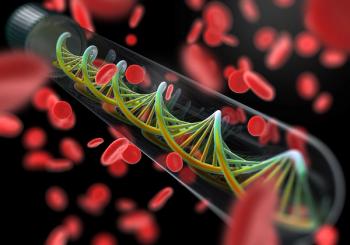
FDA Approves Combination of Nivolumab Plus Ipilimumab for mNSCLC
The FDA approved the combination of nivolumab plus ipilimumab as a first-line treatment for patients with metastatic non-small cell lung cancer whose tumors express PD-L1 (≥1%), as determined by an FDA-approved test.
The FDA approved the combination of nivolumab (Opdivo) plus ipilimumab (Yervoy) as a first-line treatment for patients with metastatic non-small cell lung cancer (NSCLC) whose tumors express PD-L1 (≥1%), as determined by an FDA-approved test, with no epidermal growth factor receptor (EGFR) or anaplastic lymphoma kinase (ALK) genomic tumor aberrations.
In addition, the FDA also approved the PD-L1 IHC 28-8 pharmDx as a companion diagnostic device for selecting patients with NSCLC for treatment with the combination of nivolumab plus ipilimumab.
The FDA recommended doses for metastatic NSCLC treatment are 3 mg/kg of nivolumab every 2 weeks and 1 mg/kg of ipilimumab every 6 weeks until disease progression, unacceptable toxicity, or up to 2 years in patients without disease progression.
Efficacy was investigated in the CHECKMATE-227 trial, a randomized, open-label, multi-part trial designed to evaluate the combination in patients with metastatic or recurrent NSCLC and no prior anticancer therapy. Researchers evaluated 2 arms in part 1 of the trial, including nivolumab plus low-dose ipilimumab or nivolumab alone versus chemotherapy in patients whose tumors express PD-L1 and nivolumab plus low-dose ipilimumab plus chemotherapy versus chemotherapy alone in patients whose tumors express PD-L1.
In part 1a of the trial, 793 patients with PD-L1 tumor expression ≥1% were randomized to receive either the combination of nivolumab plus ipilimumab (n = 396) or platinum-doublet chemotherapy (n = 397).
The trial demonstrated a statistically significant improvement in overall survival (OS) for patients with PD-L1 tumor expression ≥1% receiving the combination of nivolumab plus ipilimumab compared to those who were treated with the platinum-doublet chemotherapy. Median OS was 17.1 months (95% CI, 15-20.1) compared with 14.9 (95% CI, 12.7-16.7) in the combination arm, compared with chemotherapy (HR, 0.79; 95% CI, 0.67-0.94; P = 0.0066).
Moreover, median progression-free survival (PFS) per blinded independent central review (BICR) was 5.1 months (95% CI, 4.1-6.3) in the combination arm and 5.6 months (95% CI, 4.6-5.8) in the platinum-doublet chemotherapy arm (HR, 0.81; 95% CI, 0.69, 0.97). Confirmed overall response rates (ORR) as assessed by BICR were 36% (95% CI, 31-41) and 30% (95% CI, 26-35), respectively.
Median response duration was 23.2 months in the nivolumab plus ipilimumab arm and 6.2 months in the platinum-doublet chemotherapy arm.
The most common adverse events (AEs) observed in ≥20% of patients receiving the combination of nivolumab plus ipilimumab in CHECKMATE-227 were fatigue, rash, decreased appetite, musculoskeletal pain, diarrhea/colitis, dyspnea, cough, pruritus, nausea, and hepatitis.
Reference:
FDA. FDA approves nivolumab plus ipilimumab for first-line mNSCLC (PD-L1 tumor expression ≥1%). FDA website. Published May 15, 2020.
Newsletter
Stay up to date on recent advances in the multidisciplinary approach to cancer.
















































































